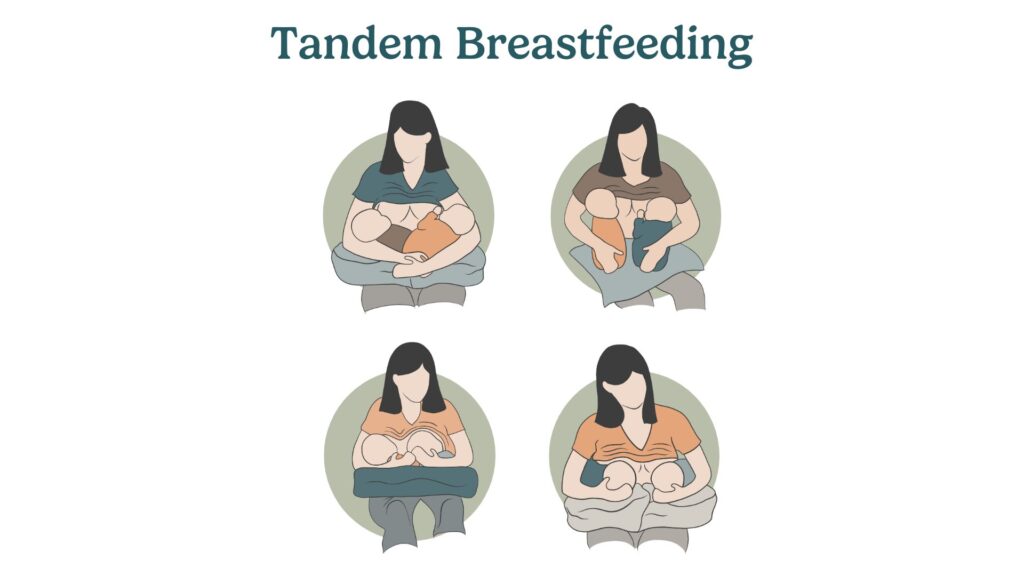tandem breastfeeding

Tandem breastfeeding
Tandem breastfeeding is the practice of nursing two children at the same time. This can include breastfeeding a newborn and an older child, or twins. Tandem breastfeeding can help maintain a close bond with both children and meet their nutritional needs.
What to watch out for
It’s important to recognize the dynamics of tandem breastfeeding and how to manage them. Here are some considerations and tips:
- Balancing needs: Newborns typically need to nurse more frequently and for longer periods than older children. Make sure your newborn gets the first opportunity to nurse.
- Sufficient milk supply: Your body can produce enough milk to meet the needs of both children, but it may take some time to adjust. Ensure you are eating well, staying hydrated, and getting enough rest to support milk production.
- Comfortable positions: Finding a comfortable position that allows you to nurse both children simultaneously can be challenging. Experiment with different holds, such as the football hold for one child and the cradle hold for the other.
- Managing jealousy: Older children may feel jealous of the new baby. Include them in the breastfeeding routine and give them attention and affection to help them feel secure.
To manage tandem breastfeeding, try these tips:
- Prioritize the newborn: Ensure your newborn gets adequate nutrition by allowing them to nurse first, especially in the early weeks.
- Set routines: Establish a breastfeeding routine that works for you and both children, ensuring that everyone’s needs are met.
- Seek support: Join support groups or seek advice from a lactation consultant experienced in tandem breastfeeding.
- Stay flexible: Be prepared to adjust your approach as your children’s needs change over time.
If you have concerns about milk supply or managing tandem breastfeeding, consult a lactation consultant or healthcare provider for personalized advice.
Physical limitations or health circumstances
Certain conditions can impact tandem breastfeeding:
- Previous breastfeeding difficulties: If you’ve had challenges with breastfeeding in the past, such as low milk supply or latch issues, these may recur.
- Fatigue: Breastfeeding two children can be physically demanding, leading to increased fatigue.
- Health conditions: Conditions such as mastitis or blocked ducts can be more challenging to manage when breastfeeding multiple children.
Other terms
Understanding related terms can help you better manage tandem breastfeeding and related challenges:
- Latch: The way your baby attaches to your breast. A good latch helps ensure effective feeding for both children.
- Milk supply: The amount of milk your body produces. Ensuring adequate milk supply is important for tandem breastfeeding.
- Breastfeeding positions: Different holds and positions that can help you comfortably nurse two children at once.
- Mastitis: An infection of the breast tissue that can cause pain, swelling, and flu-like symptoms. Prompt treatment is important, especially when tandem breastfeeding.
- Lactation consultant: A professional who can provide support and guidance on breastfeeding issues, including tandem breastfeeding.


